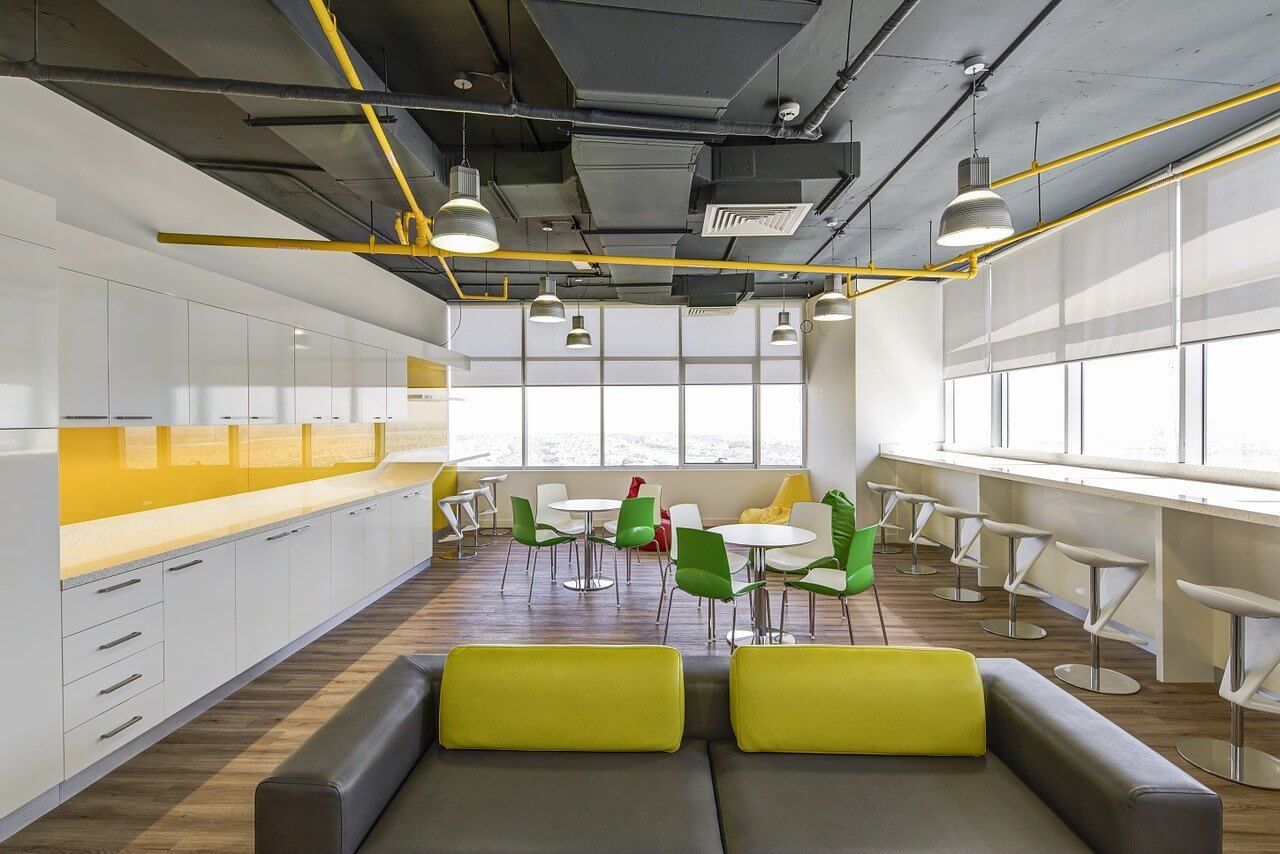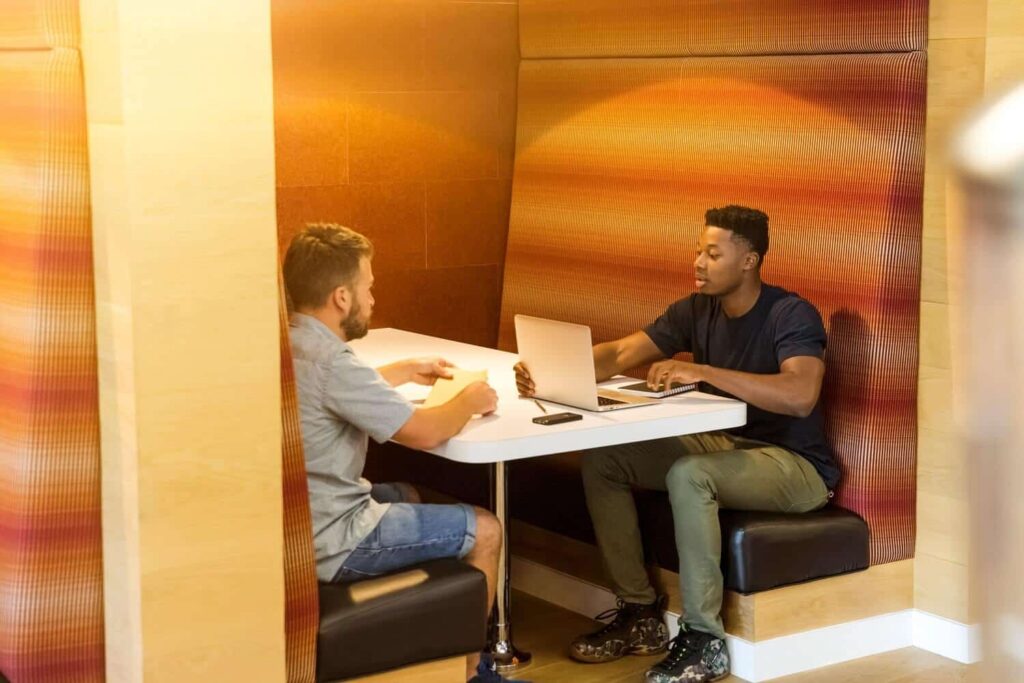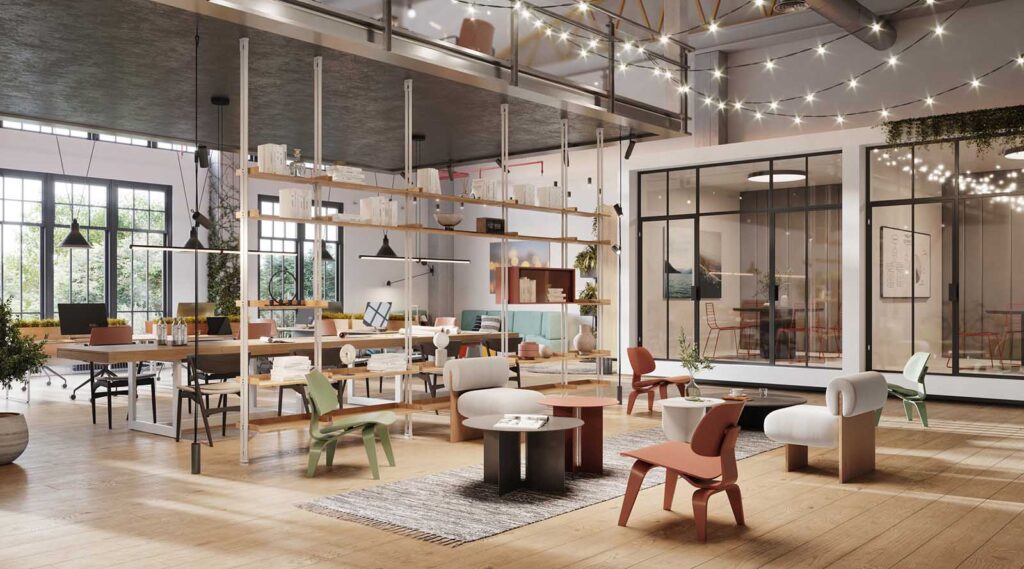
Office layout is not a one-size-fits-all solution. Different industries have priorities for their teams, and may require a more specialized workspace—these industries have unique office layout demands. An accounting firm has different needs than an educational nonprofit, which in turn has different needs than a tech company in the Silicon Valley.
Need inspiration for your office design? Here are three industries using creative office designs to motivate their teams, overcome space limitations and address their specific demands.
1. Retail
Companies in the retail industry often utilize unconventional office layouts to encourage creative and innovative thinking.
By creating spaces that encourage collaboration and productivity, companies can positively influence company culture and output overall.
Zappos is an online footwear and apparel retailer that celebrates creative freedom and autonomy, and their office layout and design reflect these values. Their self-described “fun, creativity and weirdness” can be seen in their art-filled campus in downtown Las Vegas. In order to encourage face-to-face interaction and collaboration, Zappos offices are accessed through a central plaza, which also serves as a coworking space. This design forces team members to ‘collide’ and interact more than they might in a traditional office space.

Design tip: Looking to encourage collaboration in a more conventional office? Consider using whiteboards to introduce bright colors and get team members to contribute to shared brainstorming ideas and goals throughout the week.
2. Entertainment
Work in the entertainment industry involves a lot of teamwork—so an office layout that emphasizes collaboration is essential. From one-on-one chats to team meetings, providing ample space for groups of various sizes to meet is a key goal for any entertainment facility manager. Focus on varying office sizes and be sure to pay attention to layout, furniture and room atmosphere, as these factors can have a profound impact on employees’ abilities to work together.
The National Football League is a great example of a collaborative office design. Their office layout includes communal spaces that promote maximum productivity, such as their famous Huddle Cafe. This cafe is the NFL’s corporate dining space and provides catering service to hundreds of employees daily, supporting inter-departmental collaboration and socialization. What is a huddle room? A huddle room is a small and private meeting area designed to empower people to meet quickly and easily.

Design tip: Create a communal space where members of different departments can chat and socialize during their breaks. Consider bringing in couches and a shared dining table to facilitate socialization during lunch hours and after work.
3. Customer service
Companies in the customer service industry (and any company with a customer service department) must focus on sound control. Most workplaces will have some sound control needs—you may have to reduce the sound flow from your break area and kitchen space or soundproof your executive wing. But for those companies in the customer service industry, managing volume during customer service calls is a particular priority. After all, your customer needs to feel heard, both emotionally and literally.
Plantronics, a company producing audio equipment for businesses, understands the importance of balancing volume reduction with office aesthetics. Their company incorporates their customer service team into their open and flexible office layout, but distinguishes between quiet areas, collaboration areas and flex-space workstations.

Design tip: Looking for other ways to reduce noise? Try sound-absorbing materials, purchase noise-cancelling headsets, and train your staff to manage a certain volume level both on and off the phone.
Regardless of your particular industry, strategic layouts can lead to more functional and efficient offices. Balancing function and aesthetics, space and atmosphere can feel like a tricky task—but with a bit of creativity and consideration, your industry’s demands and limitations can inspire functional workspaces.
Need more tips on office space management? Learn how space management can save your company money.
Photos: Stocksnap.io, Shutterstock, MagicDesk, Shutterstock




